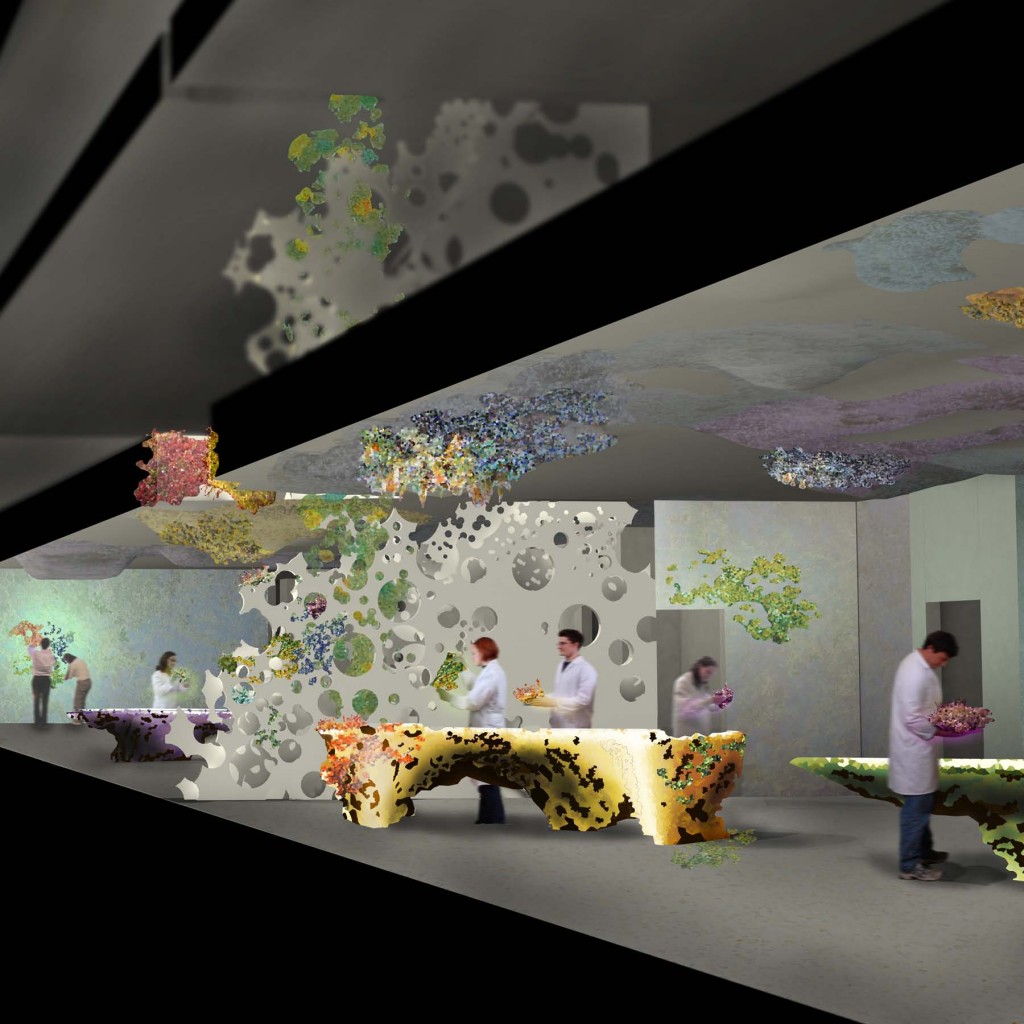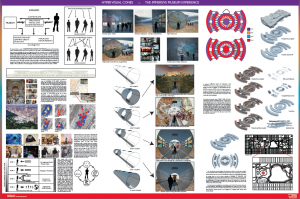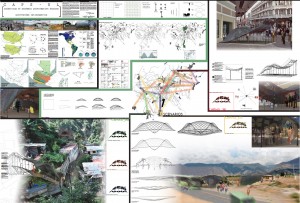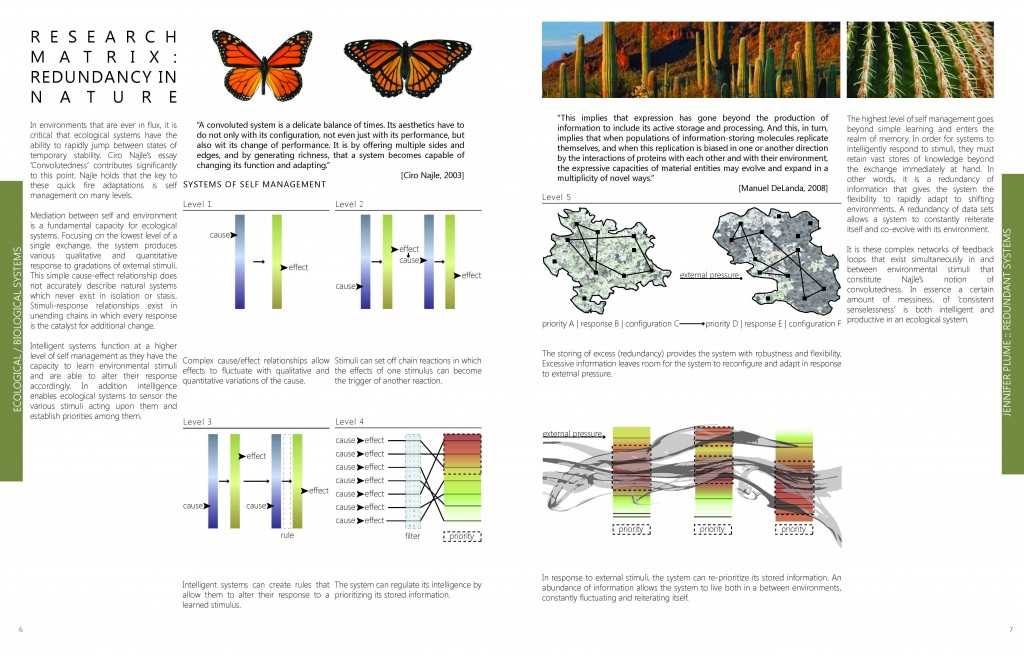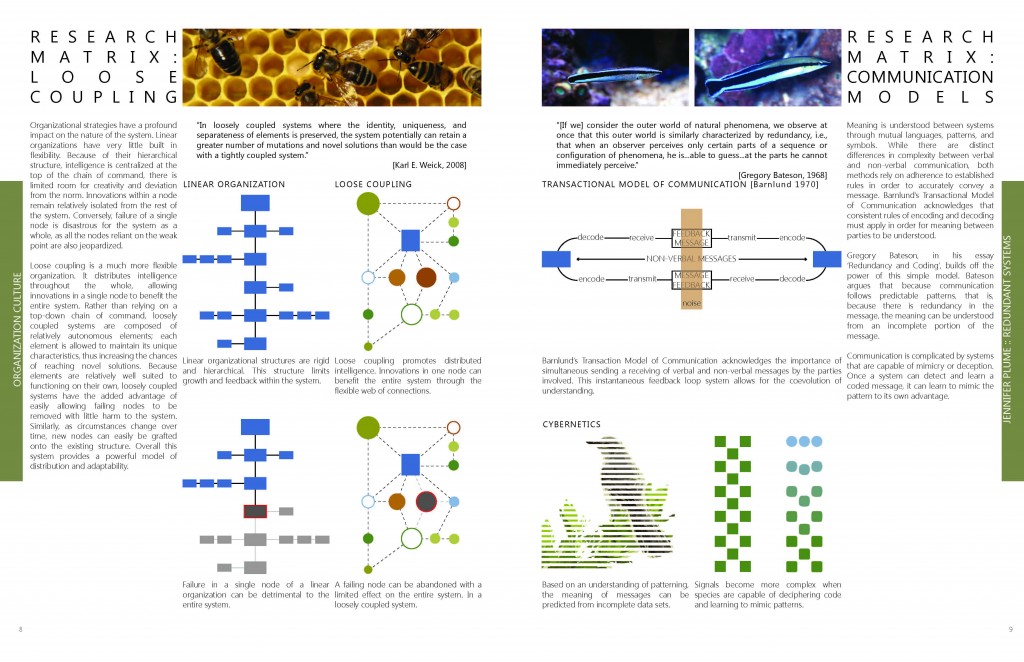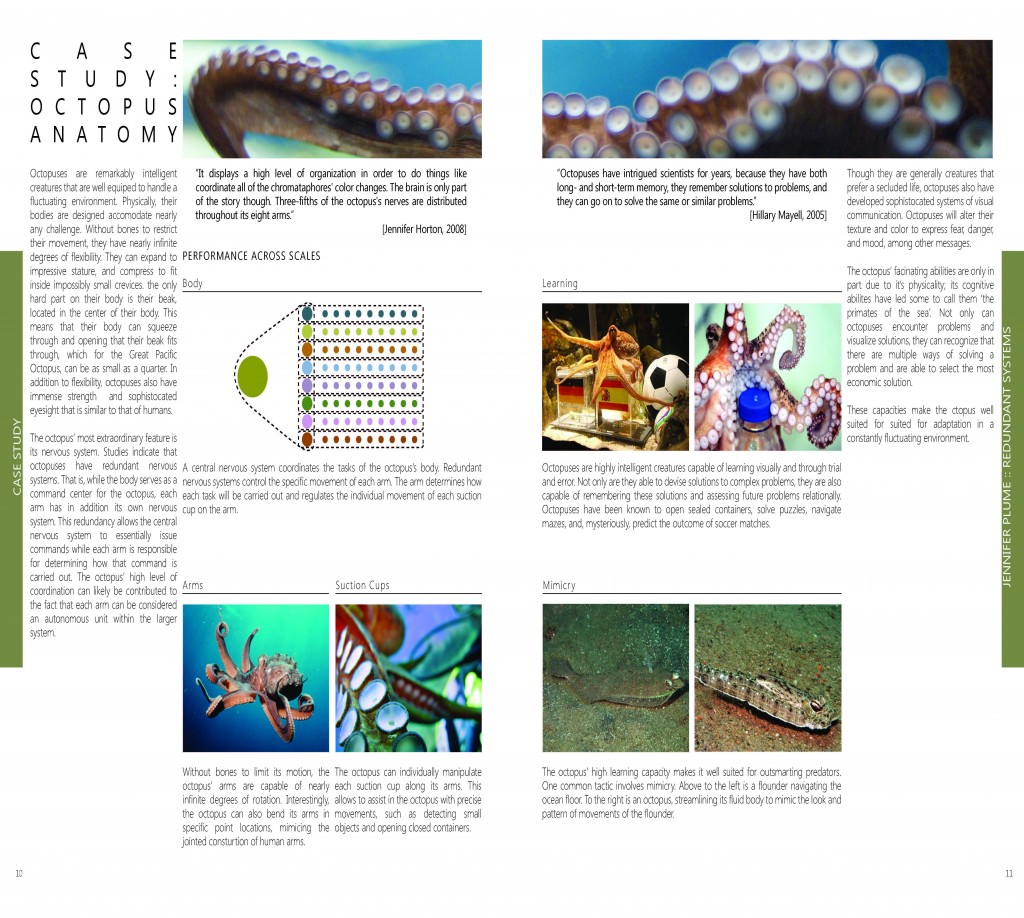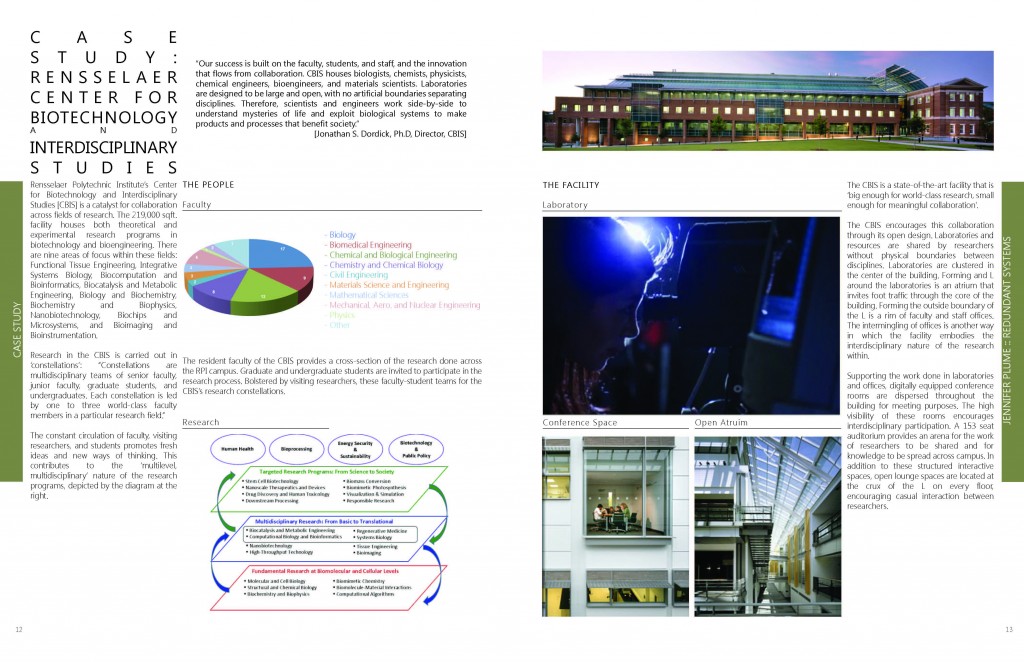STAR Constellations: Sensors for a Tangible Ambient Research
INTRODUCTION:::::::
STAR constellations has emerged from an interest in materials. Projecting toward the not-so-distant year 2048, this project situates itself in a future in which the design of space can be approached through the design of material specifications. Through the design of a new material building block, STAR constellations seeks to create communication channels that cross physical, spatial, and cognitive boundaries, generating a multitude of ways to store and access information, and producing spaces that are alive and capable of adapting to environmental change.
The RPI Center for Biotechnology and Interdisciplinary Studies acts as the prototypical site and program for the project. The collaborative nature of the Biotechnology Center serves as a testing grounds for a material intervention the seeks to foster communication between disciplines, bridge language barriers between different libraries of content, and reassess how ‘waste’ within a research environment can become a vital resource.
The realization of this material intervention takes the form of STARs. While STARs forward an object oriented research by allowing data to be filtered and manipulated through researchers’ hands-on interaction, their true power is in their communication properties. Connected and contributing to a vast archive of biotechnology research, STARs absorb and cross-reference many different information structures to allow unlike data types to speak to each other. Opening conversations between these data types allows unforeseen relationships to emerge and act as a catalyst for future discoveries.
While working together to collect information and data mine resources effectively requires the STARs to have refined internal communication abilities, equally important is their ability to communicate with researchers in the Biotechnology Center. To address this issue, STARs rely on formation, alternately assembling temporary furniture for scientists to use, ornaments for scientists view, and tools for scientists to manipulate. To test the broad range of potentials of such a material, the STAR bodies were designed and tested in three scenarios.
CONCLUSIONS:::::::
The scenarios explored through the STAR constellations are three of many possible futures that could emerge from a material intervention that incorporates near human intelligence. For this reason the specific configurations of each scenario fades in importance in comparison to the questions they ask about the role of the designer in spaces formed by living and intelligent materials.
My early research into emerging material technologies as well as the process of self-assembly revealed that the current vision of the potential of material engineering on the nanoscale positions the designer to have infinitely higher degrees of accuracy over the resulting space. Testing the STAR constellations against possible scenarios has led me to believe that designers are facing a very different but much more powerful range of potential than what has been, up until this point, imagined. To some, STARs degrade the role of the designer because the type of innate intelligence I am proposing to be built into materials actually requires designers to willingly forfeit control over specific formalisms and geometries. However, as the scenarios illustrate, the highest level of performance in the research spaces emerges from the internal logics of the STARs rather than from their controlled use by the scientists strictly as a tangible interface.
Engineering materials on the nanoscale shifts the design process away from aesthetic concerns by distributing our own human intelligence through a material matrix. The design of the STAR demonstrates that loosening our grip on specific spatial configurations allows issues of performance, social connectivity, and sustainability to be the primary concerns. The communication properties and native behaviors that are most critical in the Biotechnology Center are designed into the fabric of the STAR. The result is a highly adaptive and flexible research environment that intentionally shifts the way researchers work in and occupy space in order to meet the performance criteria designed into their genetic structure. The STARs predict a future in which materials rival the intelligence of the people who designed them.
